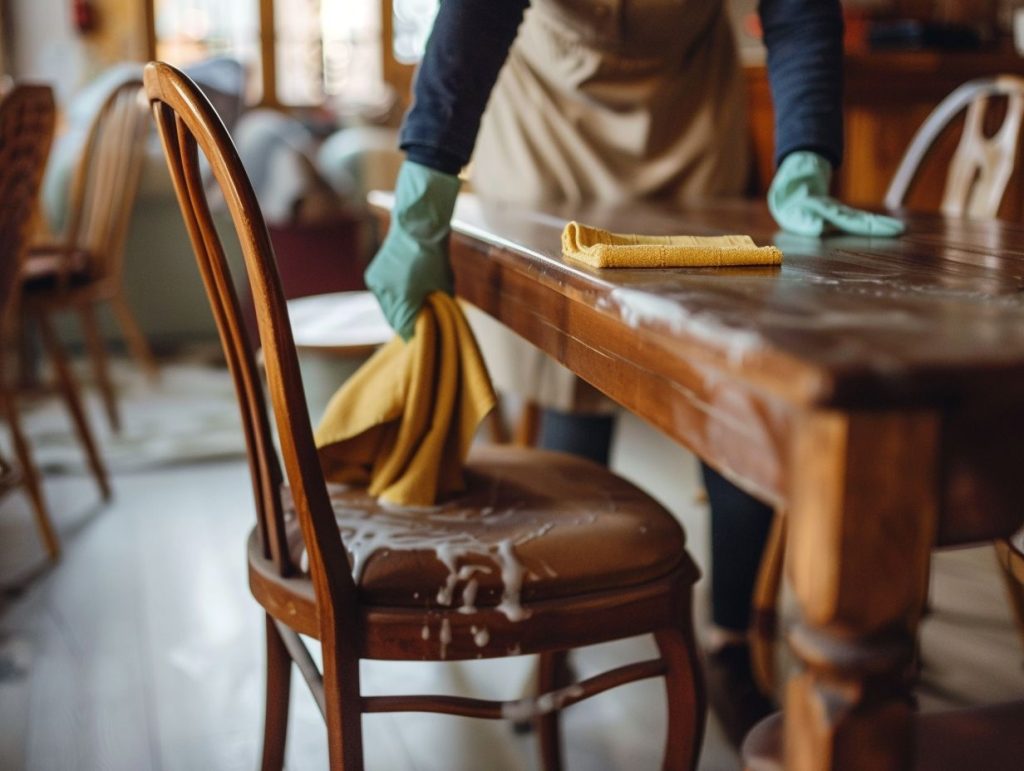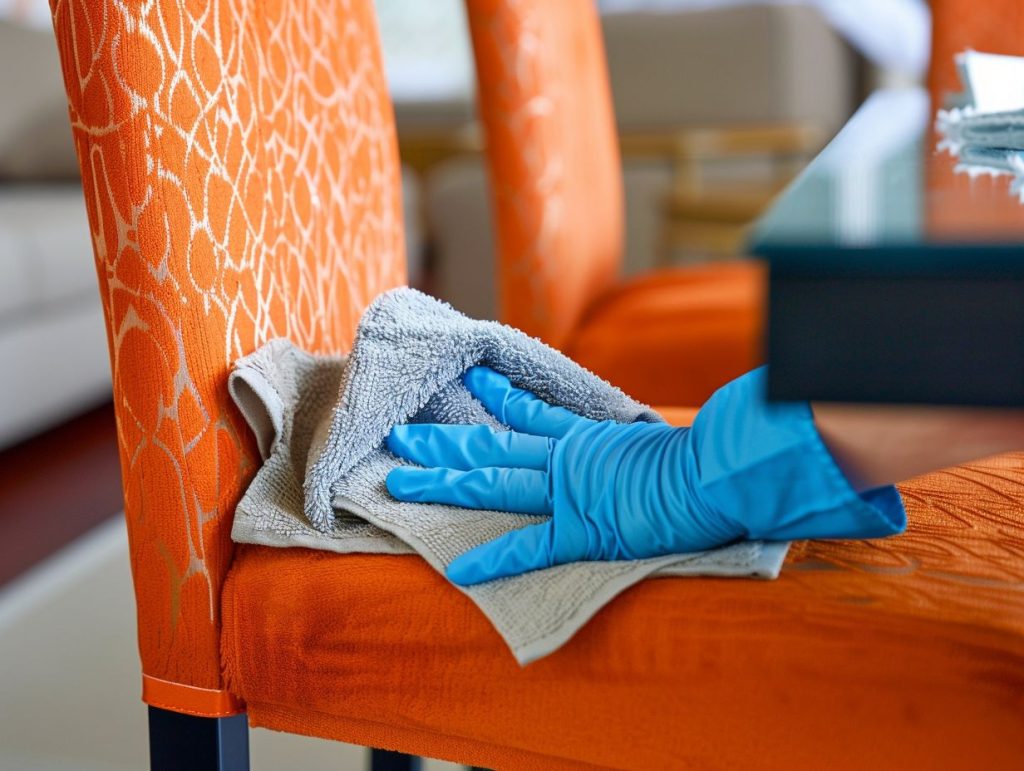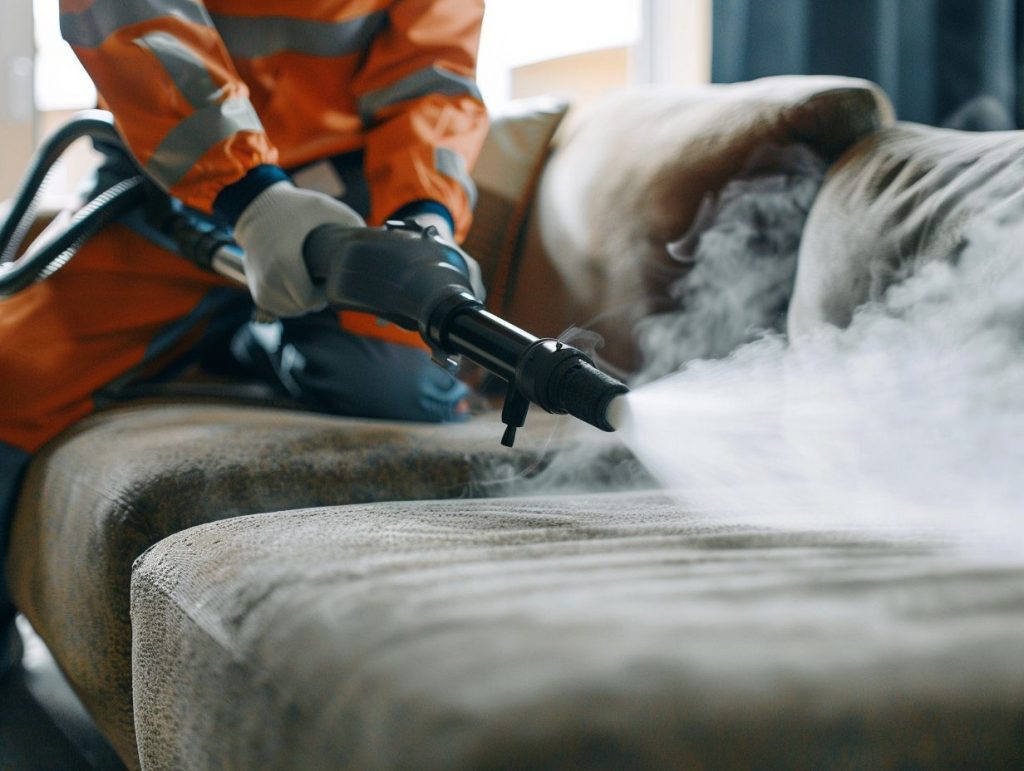Curtains are more than just window decorations – they play a significant role in your home’s cleanliness and overall aesthetic. We will explore the importance of keeping your curtains clean, the different types available, and how often you should be cleaning them. We will also discuss various cleaning methods, maintenance tips, natural ways to keep them dust-free, and common mistakes to avoid. If you want to maintain a fresh and inviting atmosphere in your home, read on to learn how to care for your curtains effectively.
Why Is It Important to Keep Curtains Clean?
Maintaining clean curtains is crucial not only for the aesthetics of your home but also for the overall hygiene and health of your indoor environment.
Clean curtains play a vital role in promoting a healthy home environment by reducing allergens that can trigger respiratory issues and allergies. Regularly cleaning your curtains helps prevent the accumulation of dust, pet dander, and other pollutants that can circulate in the air, impacting the air quality. Dusty curtains not only affect the indoor air but can also harbour germs and bacteria, posing a risk to your household’s hygiene. Establishing a routine for curtain maintenance, such as gentle vacuuming or occasional laundering, can significantly improve the cleanliness of your living spaces.
What Are the Different Types of Curtains?
When it comes to curtains, you have a variety of options to choose from based on your preferences and needs, such as fabric curtains, sheer curtains, and blackout curtains.
Fabric curtains are known for their versatility, available in a wide range of materials like cotton, linen, silk, and polyester, offering both functionality and style to any room.
On the other hand, sheer curtains are popular for their light-filtering properties, allowing natural light to illuminate the space while still providing some privacy.
If you prefer a cosy environment with minimal light penetration, blackout curtains are the go-to choice, blocking out unwanted sunlight and creating a peaceful ambiance, making them ideal for bedrooms and home theatres.
When considering interior design or renovation projects, the selection of window treatments plays a crucial role in enhancing the overall aesthetics and functionality of a space, adding a finishing touch to the room’s decor.
Fabric Curtains
Fabric curtains offer a range of options in terms of texture, colour, and pattern, making them a popular choice for many households seeking both functionality and style.
When it comes to maintaining fabric curtains, understanding the washing instructions is key to prolonging their lifespan. Different fabric types such as cotton, linen, or velvet may require specific care techniques.
For instance, delicate fabrics like silk should be hand-washed in cold water, while heavier fabrics can usually withstand a gentle cycle in the washing machine. Stain removal can be a common concern, but gentle spot-cleaning with mild soap are effective techniques for most fabrics.
Regular vacuuming or dusting can help prevent dust build-up and maintain the curtains’ appearance over time.
Sheer Curtains
Sheer curtains are valued for their light-filtering properties, creating an airy and delicate ambiance in any room while allowing natural light to gently illuminate the space.
To maintain the appearance of sheer curtains, it is important to regularly dust them to prevent the accumulation of dirt and debris that can dull their sheen.
When hanging sheer curtains, consider using double rods to layer them with heavier drapes for a stylish layered look. Another tip is to ensure the length of the sheer curtains reaches the floor or just slightly pools at the bottom for an elegant and flowing effect.
By following these best practices, you can enhance the beauty and functionality of sheer curtains in your home.
Blackout Curtains
Blackout curtains are specifically designed to block out light completely, offering privacy, insulation, and a darkened environment that promotes relaxation and restful sleep.
They are not only effective in creating a cosy ambiance in bedrooms, but also play a significant role in enhancing energy efficiency by preventing heat loss during colder months and blocking heat gain in warmer seasons.
To ensure their functionality, it is important to regularly shake out or vacuum the curtains to remove any dust or debris that may accumulate. Seasonal cleaning, including spot cleaning with a damp cloth or having them professionally cleaned, helps in maintaining the blackout curtains’ effectiveness and prolonging their lifespan.
How Often Should You Clean Your Curtains?
Establishing a regular cleaning schedule for your curtains is essential to prevent dust build-up, allergen accumulation, and maintain a fresh and hygienic indoor environment.
The frequency of curtain cleaning can vary depending on the fabric type and the level of household activities. For curtains in high-traffic areas or homes with pets, more frequent cleaning may be necessary to keep them looking their best. Environmental factors such as air quality and humidity levels can also impact how often curtains need to be cleaned.
By sticking to a maintenance schedule, you can ensure that your curtains are consistently kept clean and free from dust and debris, contributing to a healthier living space.
What Are the Different Methods for Cleaning Curtains?
When it comes to cleaning curtains, you have various methods at your disposal, including machine washing, hand washing, dry cleaning, and steam cleaning, each catering to different fabric types and cleaning requirements.
Machine washing is a convenient option for curtains made of sturdy fabrics like cotton or polyester. Use a gentle cycle with cold water and mild detergent to prevent damage. For delicate or sheer curtains, hand washing is recommended. Fill a basin with lukewarm water and a gentle detergent, gently agitate the curtains, and then rinse thoroughly. Dry cleaning is suitable for intricate or heavy drapes, seeking professional services to maintain their quality. Steam cleaning is ideal for removing odour and light dirt, minimising the risk of damage by avoiding direct contact with curtains.
Machine Washing
Machine washing offers a convenient and efficient way to clean curtains, provided you follow the specific washing instructions for the fabric type and use a suitable vacuum attachment to remove excess dust before washing.
Once you have selected the appropriate cycle for your curtains, it’s crucial to consider the temperature settings. Most curtains can be washed in cold or warm water, but delicate fabrics may require a gentle cycle with cold water to prevent damage. When it comes to detergent selection, opt for a mild, non-bleach detergent to protect the fabric’s colour and texture. After loading the curtains into the machine, avoid overcrowding to ensure they are washed thoroughly. Once the washing cycle is complete, hang the curtains to dry or tumble dry on low heat to avoid shrinking.
Hand Washing
Hand washing curtains is a more delicate approach that allows for targeted stain removal and the use of gentle washing solutions to preserve the fabric quality and color vibrancy.
- Start by identifying any stains on the curtains and spot cleaning them with a mild detergent or a specialised stain remover before proceeding with the overall wash.
- Select a suitable washing solution based on the curtain’s fabric type; for instance, mild detergent works well for most curtains, while delicate fabrics may require specialised fabric wash.
- When washing the curtains, ensure thorough rinsing to remove all soap residue, which can affect the fabric’s texture.
- After washing, gently squeeze out excess water and avoid wringing to prevent damage.
- When drying, hang the curtains evenly to maintain their shape, and consider ironing on a low heat setting while they are still slightly damp for a crisp finish.
Dry Cleaning
Dry cleaning is a suitable option for curtains made of delicate fabrics or those with complex designs that require professional expertise to ensure proper cleaning and maintenance.
Professional dry cleaning services play a crucial role in preserving the quality and appearance of curtains. The specialised techniques used in dry cleaning help to remove stains, odours, and dust without causing damage to the fabric. By entrusting your curtains to experts in the field, you can rest assured that they will be treated with care and attention to detail. In addition to maintaining the aesthetic appeal of your curtains, professional cleaning also contributes to overall household hygiene by removing allergens and bacteria that may accumulate over time.
Steam Cleaning
Steam cleaning offers a chemical-free and effective way to refresh and sanitize curtains, eliminating allergens, odors, and dust mites while promoting a healthier indoor environment.
Using the power of high-temperature steam, this process penetrates the fabric fibers of curtains, reaching deep-seated contaminants that traditional cleaning methods may miss. By effectively killing bacteria, germs, and other harmful particles, steam cleaning not only enhances the appearance of curtains but also plays a significant role in maintaining a hygienic home environment.
The use of steam helps to neutralise stubborn odors, leaving curtains smelling fresh and clean. This method is particularly beneficial for those with allergies or respiratory issues as it reduces the presence of potential triggers in the home.
What Are Some Tips for Maintaining Clean Curtains?
Incorporating simple maintenance tips into your routine can help keep your curtains clean and fresh, extending their lifespan and preserving their appearance over time.
- Regular vacuuming your curtains is a key step in preventing dust build-up, especially for heavier fabrics that tend to attract more particles.
- Spot cleaning is essential for immediate stain removal, addressing spills or marks promptly to maintain the cleanliness of your curtains.
- Using fabric protectants can provide a proactive shield against potential spills and soiling, ultimately contributing to the overall quality and hygiene of your curtains.
Regularly Vacuuming
Regularly vacuuming your curtains with a suitable attachment helps eliminate debris, dust, and allergens that might settle on the fabric or poles, contributing to a cleaner and healthier indoor environment.
It is crucial to select the right vacuum attachment when cleaning curtains to prevent damage to the delicate fabric. Opt for a soft brush or upholstery attachment to ensure gentle yet effective removal of dirt and dust.
Paying attention to the maintenance of the curtain poles is essential for a thorough cleaning process. Dust and debris tend to accumulate on poles, so incorporating pole cleaning into your curtain vacuuming routine can significantly enhance the cleanliness of your window treatments.
Spot Cleaning
Spot cleaning is an effective method for dealing with stains promptly and efficiently, preventing them from setting and requiring more extensive cleaning measures later on.
It is crucial to identify the type of stain before proceeding with the spot cleaning process.
For food and beverage stains, dab the area with a clean cloth dipped in a mixture of mild detergent and water.
Grease and oil stains can be tackled by sprinkling cornflour or bicarbonate of soda on the spot to absorb the oil, followed by gentle brushing.
For more delicate fabrics like silk or velvet, it is advisable to check the care label for specific washing instructions.
Always test any cleaning solution on a concealed area of the curtain to ensure it does not cause harm.
Using Fabric Protectant
Applying a fabric protectant to your curtains can help safeguard them against stains, moisture, and mildew, prolonging their lifespan and maintaining their pristine condition.
These protectants create a protective barrier that repels liquids and prevents them from seeping into the fabric, making cleaning easier and preventing permanent damage.
By reducing the absorption of moisture, fabric protectants also help in preventing mould and mildew growth, which can cause unpleasant odours and compromise the integrity of the curtains.
When selecting a fabric protectant, opt for a product specifically designed for curtains and upholstery, ensuring compatibility and effectiveness.
Proper application is key; follow the manufacturer’s instructions carefully to evenly coat the fabric surface for optimal protection.
What Are Some Natural Ways to Keep Curtains Dust-free?
Exploring natural remedies for keeping your curtains dust-free can be both eco-friendly and effective in maintaining a clean and allergen-free indoor environment.
Incorporating the use of essential oils not only adds a pleasant fragrance to your living space but also harnesses their natural dust-repellent properties.
Hanging your curtains in sunlight not only helps to naturally disinfect them but also aids in reducing moisture build-up that can attract dust.
Utilising a lint roller for quick dust removal on a regular basis ensures that your curtains stay fresh and clean without the need for harsh chemicals or excessive washing.
These eco-friendly methods not only promote a healthier home environment but also contribute towards sustainability and reducing indoor air pollutants.
Using Essential Oils
Essential oils can serve as a natural dusting agent for curtains, imparting a pleasant aroma while effectively repelling dust and allergens for a fresher and cleaner curtain appearance.
When selecting essential oils for dusting curtains, opt for uplifting scents like lavender, citrus, or peppermint for a refreshing touch. These oils not only help in dust removal but also work wonders in neutralising odours, making your living space smell inviting. To apply essential oils, dilute a few drops in water and lightly mist your curtains before dusting. This method not only helps in enhancing indoor air quality but also adds a therapeutic element to your cleaning routine.
Hanging Curtains in the Sun
Harnessing the power of sunlight by hanging curtains outdoors can help naturally disinfect and refresh the fabric while reducing debris and dust accumulation for a cleaner and brighter curtain display.
Sunlight exposure not only eliminates odours that may linger within the fabric but also aids in killing bacteria and germs, promoting a healthier indoor environment. To maximise these benefits, ensure that the curtains are exposed to direct sunlight for at least a few hours.
Sunlight can act as a natural brightener, maintaining the vibrancy and colour intensity of your curtains. When hanging curtains outdoors, make sure to shake them gently to remove any dust or loose debris before letting the sun work its magic.
Using a Lint Roller
A lint roller is a handy tool for quickly removing dust, debris, and pet hair from curtains, offering a convenient solution for maintaining a dust-free and pristine curtain appearance.
By regularly using a lint roller on your curtains, you can easily keep them looking fresh and clean. When selecting a lint roller, opt for high-quality ones with strong adhesive sheets that effectively pick up lint and dirt. To incorporate this tool into your cleaning routine, consider rolling it over your curtains once a week, focusing on areas prone to accumulating dust and pet hair. This simple step will not only enhance the overall look of your curtains but also contribute to a healthier indoor environment by reducing allergens.
What Are Some Common Mistakes to Avoid When Cleaning Curtains?
Avoiding common mistakes during curtain cleaning is essential to prevent damage, preserve fabric quality, and ensure effective removal of dirt and stains without compromising the integrity of the curtains.
It is crucial to steer clear of using strong chemicals when cleaning curtains, as these can weaken the fabric fibres and lead to irreparable harm. Neglecting care instructions – such as machine washing when dry cleaning is recommended – can result in shrinkage or discolouration. Another key aspect to consider is the prevention of mildew, which can be achieved by ensuring adequate ventilation and avoiding excessive moisture build-up. By following these best practices, you can effectively maintain the cleanliness and longevity of your curtains.
Using Harsh Chemicals
The use of harsh chemicals for cleaning curtains can cause damage to the fabric, compromise colour vibrancy, and weaken fibres, leading to premature wear and tear that affects the overall curtain appearance.
Opting for gentler cleaning solutions is crucial to preserve the integrity of your curtains. Harsh chemicals not only fade colours and weaken fibres but can also leave behind residue that attracts more dirt.
To tackle stains effectively without risking fabric damage, consider using mild detergents, natural soaps, or specialised curtain cleaners designed for the specific fabric type. For delicate fabrics like silk or velvet, it’s best to opt for professional dry cleaning services to ensure thorough cleaning without compromising the material’s quality.
Not Following Care Instructions
Ignoring care instructions for curtains can result in unintended consequences such as shrinkage, color fading, or fabric damage, underscoring the importance of adhering to recommended cleaning guidelines for each curtain type.
Proper care instructions are provided by manufacturers to help maintain the quality and appearance of curtains over time. By following washing guidelines, drying recommendations, and ironing instructions, you can extend the longevity of your curtains and keep them looking fresh.
Neglecting these instructions can lead to irreversible damage that not only affects the aesthetics of your curtains but also shortens their lifespan. Taking the time to care for your curtains properly can make a significant difference in how they enhance the overall ambiance of your living space.
Not Cleaning Regularly
Neglecting regular curtain cleaning can lead to dust accumulation, allergen build-up, and the formation of mildew, compromising the cleanliness, appearance, and indoor air quality of your living space.
This can result in respiratory issues for you and your family members, especially those with allergies or asthma. To prevent these consequences, it’s crucial to incorporate regular curtain maintenance into your household cleaning routines.
You can start by vacuuming your curtains weekly to remove surface dust and dirt. Consider washing your curtains every few months according to the manufacturer’s instructions to eliminate deep-seated allergens and maintain a fresh indoor environment. By implementing these simple steps, you can ensure a clean and healthy living space for you and your loved ones.



